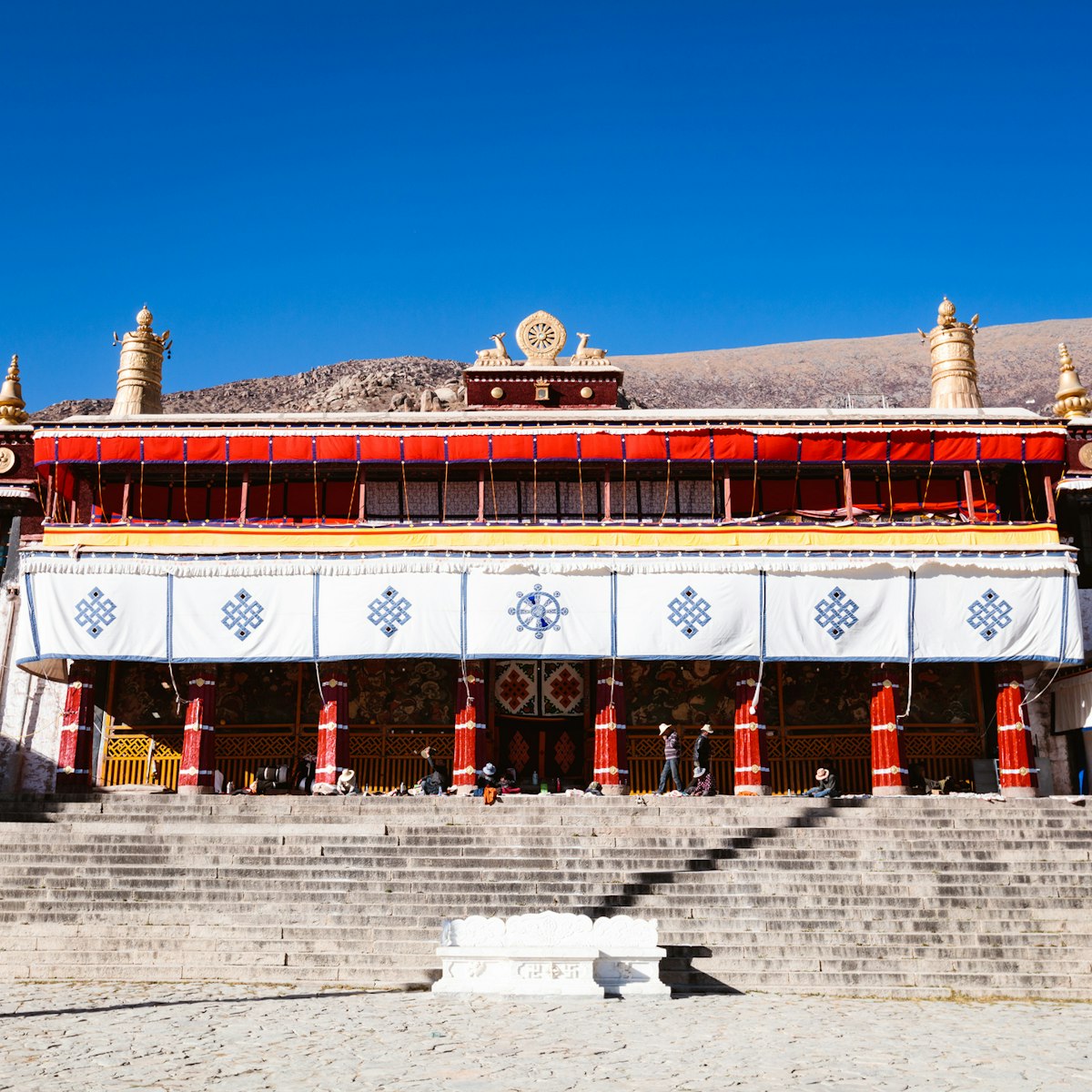Along with Sera and Ganden Monasteries, Drepung functioned as one of the three 'pillars of the Tibetan state', and it was purportedly the largest monastery in the world, with around 7000 resident monks at its peak. Drepung means 'rice heap', a reference to the white buildings dotting the hillside. The 1½-hour kora (pilgrim circuit) around the 15th-century monastery, 8km west of Lhasa, is among the highlights of a trip to the city.
The kings of Tsang and the Mongols savaged the place regularly; oddly, the Red Guards pretty much left it alone during the Cultural Revolution. With concerted rebuilding, Drepung once again resembles a monastic village and around 600 monks reside here. At lunchtime you can see the novices bringing in buckets of tsampa (roasted-barley flour) and yak-butter tea. In the afternoon you can often witness Tibetan-style religious debating (lots of hand slapping and gesticulating). The best way to visit the monastery is to follow the pilgrim groups or the yellow signs.
Nearby Nechung Monastery, a 10-minute walk downhill, was once the home of the Tibetan state oracle and is worth a visit for its blood-curdling murals.
Bus 25 (¥1) runs from Beijing Donglu to the foot of the Drepung hill, from where minivans (¥2) run up to the monastery. Most tourists take a taxi from the Barkhor area for around ¥60.




